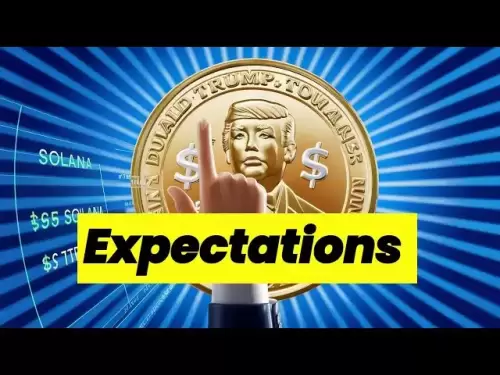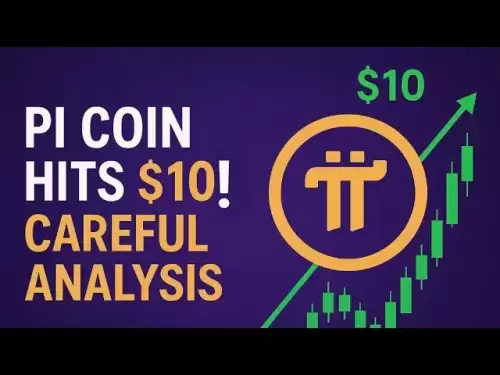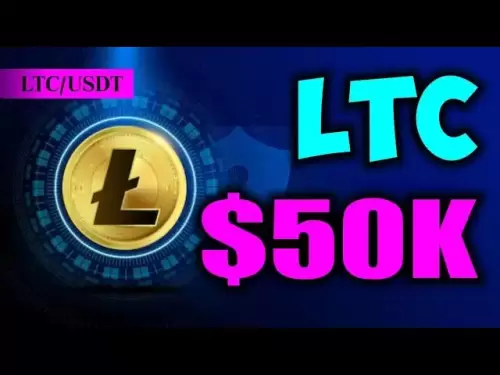-
 Bitcoin
Bitcoin $118800
0.58% -
 Ethereum
Ethereum $3813
6.89% -
 XRP
XRP $3.529
2.75% -
 Tether USDt
Tether USDt $1.000
-0.01% -
 BNB
BNB $755.1
3.06% -
 Solana
Solana $183.0
2.98% -
 USDC
USDC $0.9997
-0.01% -
 Dogecoin
Dogecoin $0.2670
9.75% -
 Cardano
Cardano $0.8748
5.90% -
 TRON
TRON $0.3192
0.08% -
 Hyperliquid
Hyperliquid $47.26
5.01% -
 Stellar
Stellar $0.4763
2.59% -
 Sui
Sui $4.001
5.68% -
 Chainlink
Chainlink $19.68
8.62% -
 Hedera
Hedera $0.2796
3.70% -
 Bitcoin Cash
Bitcoin Cash $550.9
9.05% -
 Avalanche
Avalanche $25.39
6.47% -
 Shiba Inu
Shiba Inu $0.00001557
5.68% -
 Litecoin
Litecoin $117.7
15.59% -
 UNUS SED LEO
UNUS SED LEO $8.975
-0.11% -
 Toncoin
Toncoin $3.315
4.44% -
 Polkadot
Polkadot $4.581
7.41% -
 Uniswap
Uniswap $10.84
7.11% -
 Pepe
Pepe $0.00001451
10.27% -
 Ethena USDe
Ethena USDe $1.001
0.00% -
 Monero
Monero $327.5
0.06% -
 Bitget Token
Bitget Token $5.018
2.63% -
 Dai
Dai $0.9999
0.00% -
 Aave
Aave $334.4
5.21% -
 Bittensor
Bittensor $432.3
3.73%
What is a quarterly future?
Quarterly futures are time-bound crypto contracts expiring each quarter, used for hedging, speculation, or price exposure without owning the asset.
Jul 20, 2025 at 05:28 pm
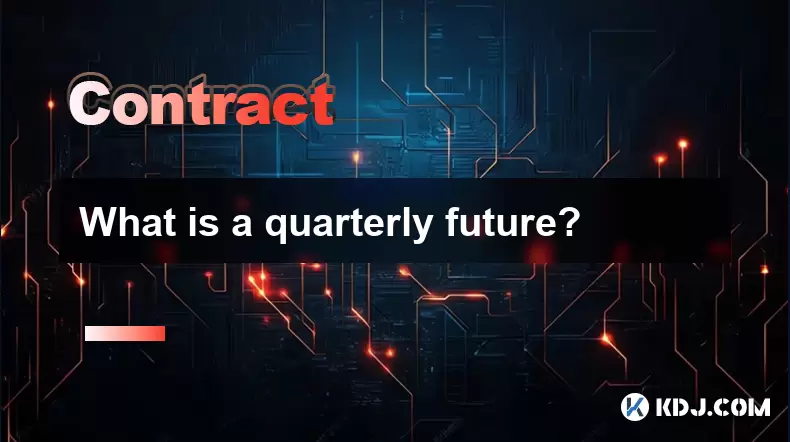
Understanding Quarterly Futures in the Cryptocurrency Market
In the realm of cryptocurrency trading, quarterly futures refer to a type of futures contract that expires on a predetermined date at the end of each quarter—typically in March, June, September, and December. These contracts are standardized agreements between two parties to buy or sell a specific cryptocurrency asset at a set price and future date. Unlike perpetual futures, which have no expiration date, quarterly futures are time-bound and settle on their expiration date based on the mark price or index price.
Cryptocurrency traders and institutional investors often use quarterly futures contracts to hedge against price volatility, speculate on future price movements, or gain exposure to digital assets without holding them directly.
How Quarterly Futures Work
Quarterly futures operate under a fixed timeline. Once a trader enters a contract, they agree to either buy or sell a specific amount of a cryptocurrency—such as Bitcoin or Ethereum—at a predetermined price when the contract reaches its quarterly expiration date.
For example, if a trader opens a long position on a BTC quarterly future with an expiration in September, they are committing to purchase Bitcoin at a fixed price in September, regardless of the spot price at that time. If the market price of Bitcoin rises above the contract price, the trader profits. Conversely, if the market price drops below the agreed-upon price, the trader incurs a loss.
The pricing of these contracts is often influenced by factors such as interest rates, spot price, market sentiment, and funding rates (though funding rates are more relevant to perpetual contracts).
Key Features of Quarterly Futures Contracts
- Expiration Date: Each quarterly future contract has a fixed expiry date, usually at the end of a calendar quarter.
- Standardized Sizes: Contracts come in standardized sizes, such as 1 BTC per contract, making them easier to trade across platforms.
- Settlement Mechanism: Upon expiration, contracts are settled in either cash or physical delivery, depending on the exchange and asset involved.
- Leverage Options: Traders can apply leverage to amplify their exposure, though this also increases the risk of liquidation.
- Price Discovery: These contracts help in price discovery, offering insights into where the market expects the asset’s price to be in the future.
Benefits of Trading Quarterly Futures
Trading quarterly futures offers several advantages to both retail and institutional traders:
- Hedging: Investors holding cryptocurrency can use quarterly futures to hedge against downside risk. For example, if someone owns Bitcoin and fears a price drop in the next few months, they can short a quarterly future to lock in the current price.
- Speculation: Traders can speculate on the future direction of crypto prices without owning the underlying asset.
- Market Efficiency: Futures markets contribute to price stability and liquidity, especially in more volatile crypto markets.
- Portfolio Diversification: Including futures in a portfolio allows traders to diversify their strategies and potentially reduce risk.
Where to Trade Quarterly Futures
Several major cryptocurrency exchanges offer quarterly futures contracts, including:
- Binance Futures
- Bybit Derivatives
- OKX Futures
- BitMEX
- Huobi Futures
Each platform has its own contract specifications, leverage limits, and settlement methods. It’s crucial to review the terms and conditions, fee structures, and margin requirements before entering any trade.
Most exchanges allow users to trade with up to 100x leverage, though higher leverage increases the risk of liquidation. It’s also important to understand the margin type—whether isolated or cross—as this affects how much capital is at risk in case of adverse price movements.
Steps to Trade Quarterly Futures
- Create an Account: Sign up on a crypto futures exchange and complete the KYC process.
- Deposit Funds: Transfer funds into your futures wallet using crypto or fiat, depending on the platform.
- Select the Contract: Navigate to the futures section and choose the quarterly contract for the desired cryptocurrency.
- Set Leverage: Adjust the leverage level based on your risk tolerance.
- Place the Order: Choose between limit, market, or stop orders depending on your strategy.
- Monitor Position: Keep an eye on the liquidation price, mark price, and funding rate (if applicable).
- Close or Let Expire: Either close the position before expiration or let it settle automatically on the expiry date.
Risks Involved in Quarterly Futures Trading
- Leverage Risk: High leverage can lead to total capital loss if the market moves against the trader.
- Liquidation Risk: If the price moves too far against an open position, the exchange may automatically liquidate it to prevent further losses.
- Market Volatility: Cryptocurrencies are inherently volatile, which can cause rapid price swings and unexpected losses.
- Funding Rate Misconceptions: Although quarterly futures don’t involve recurring funding rates like perpetual contracts, misunderstanding how settlement works can still lead to losses.
FAQ: Frequently Asked Questions
What is the difference between quarterly futures and perpetual futures?
Quarterly futures have a fixed expiration date, while perpetual futures do not. Perpetual contracts use funding rates to tether their price to the spot market, whereas quarterly futures simply expire at the end of the quarter.
Can I close a quarterly futures contract before expiration?
Yes, traders can close their positions at any time before the contract expires by taking an offsetting position.
How is the settlement price determined for quarterly futures?
The settlement price is typically based on the mark price or index price calculated by the exchange over a specified window before expiration.
Do quarterly futures require collateral?
Yes, traders must provide collateral in the form of margin to open a position. The required margin depends on the contract value and the leverage used.
Disclaimer:info@kdj.com
The information provided is not trading advice. kdj.com does not assume any responsibility for any investments made based on the information provided in this article. Cryptocurrencies are highly volatile and it is highly recommended that you invest with caution after thorough research!
If you believe that the content used on this website infringes your copyright, please contact us immediately (info@kdj.com) and we will delete it promptly.
- Iron Maiden: Music Legends Celebrate 50 Years with Royal Mint Coin
- 2025-07-21 00:30:13
- BlockDAG, TIA, LTC: Unveiling the Latest Crypto Buzz
- 2025-07-21 00:50:12
- Ethereum Layer-2 Meme Coins: Little Pepe's Big Leap?
- 2025-07-21 00:30:13
- MoonBull, Crypto, and BOME Gains: Riding the Meme Coin Wave to 100x?
- 2025-07-21 00:50:12
- Bitcoin, ETH, and the Trader Target: Decoding the Crypto Landscape
- 2025-07-21 01:10:14
- Solana's TVL Growth: Riding the Cryptocurrency Wave
- 2025-07-21 01:10:14
Related knowledge

What is a maker vs a taker fee?
Jul 19,2025 at 01:14am
Understanding the Basics of Cryptocurrency Exchange FeesIn the world of cryptocurrency trading, maker vs taker fees are a fundamental concept that eve...

How to analyze Bitcoin futures data from CME?
Jul 19,2025 at 05:22pm
Understanding Bitcoin Futures on CMEBitcoin futures on the CME Group (Chicago Mercantile Exchange) represent a regulated financial instrument that all...
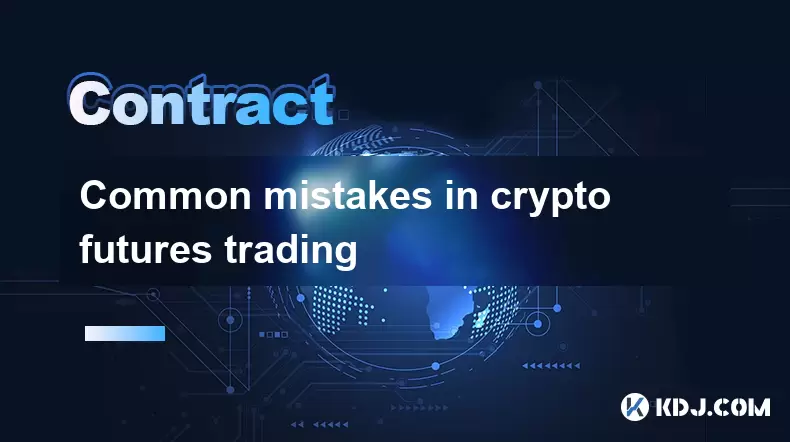
Common mistakes in crypto futures trading
Jul 20,2025 at 09:56pm
Overleveraging Without Risk ManagementOne of the most common mistakes in crypto futures trading is overleveraging. Traders often believe that using hi...

How to understand the liquidation price?
Jul 19,2025 at 10:00pm
What Is a Liquidation Price in Cryptocurrency Trading?In the realm of cryptocurrency futures and margin trading, the liquidation price refers to the s...
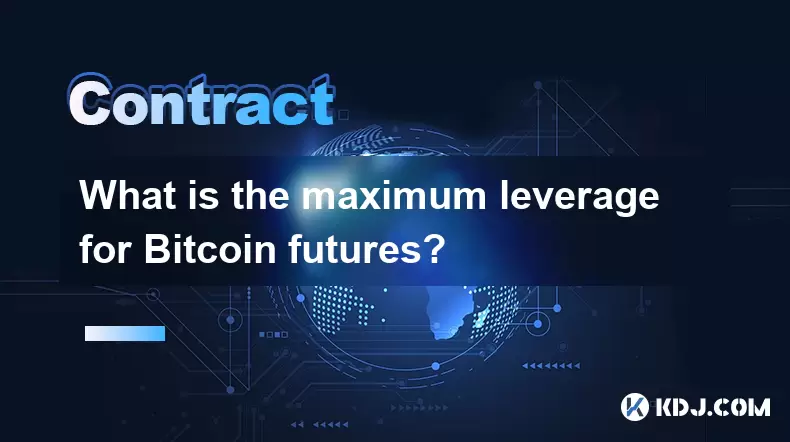
What is the maximum leverage for Bitcoin futures?
Jul 20,2025 at 03:42pm
Understanding Leverage in Bitcoin FuturesLeverage in Bitcoin futures refers to the use of borrowed capital to increase the potential return on investm...
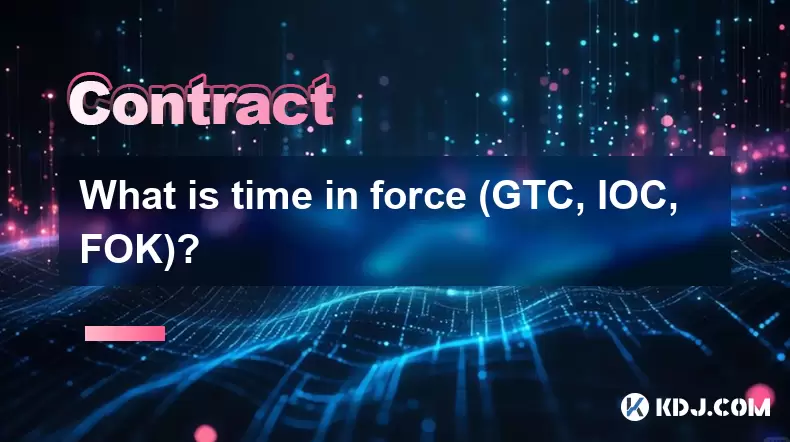
What is time in force (GTC, IOC, FOK)?
Jul 19,2025 at 08:57am
Understanding Time in Force in Cryptocurrency TradingIn the world of cryptocurrency trading, the Time in Force (TIF) is a crucial parameter that deter...

What is a maker vs a taker fee?
Jul 19,2025 at 01:14am
Understanding the Basics of Cryptocurrency Exchange FeesIn the world of cryptocurrency trading, maker vs taker fees are a fundamental concept that eve...

How to analyze Bitcoin futures data from CME?
Jul 19,2025 at 05:22pm
Understanding Bitcoin Futures on CMEBitcoin futures on the CME Group (Chicago Mercantile Exchange) represent a regulated financial instrument that all...

Common mistakes in crypto futures trading
Jul 20,2025 at 09:56pm
Overleveraging Without Risk ManagementOne of the most common mistakes in crypto futures trading is overleveraging. Traders often believe that using hi...

How to understand the liquidation price?
Jul 19,2025 at 10:00pm
What Is a Liquidation Price in Cryptocurrency Trading?In the realm of cryptocurrency futures and margin trading, the liquidation price refers to the s...

What is the maximum leverage for Bitcoin futures?
Jul 20,2025 at 03:42pm
Understanding Leverage in Bitcoin FuturesLeverage in Bitcoin futures refers to the use of borrowed capital to increase the potential return on investm...

What is time in force (GTC, IOC, FOK)?
Jul 19,2025 at 08:57am
Understanding Time in Force in Cryptocurrency TradingIn the world of cryptocurrency trading, the Time in Force (TIF) is a crucial parameter that deter...
See all articles





















